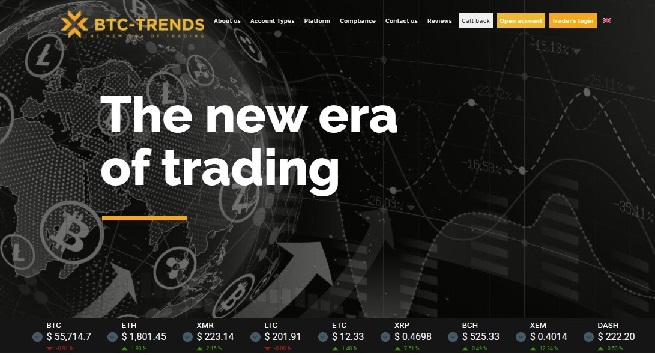While bitcoin is struggling to undermine the world of traditional finance, University College London researchers have come up with something that is likely to undermine both. Meet RSCoin, the centralised digital currency.
In a nutshell
The main trouble the bitcoin community is concentrated upon nowadays is, of course, the block size issue. And the reason why it is so difficult a task to scale the block and allow more transactions is that each transaction should be confirmed, and the more participants join the network, the more computational power is required for proofs-of-work. Well, this can be easily avoided, claim Sarah Meiklejohn and George Danezis, the creators of RSCoin. A truly scalable cryptocurrency may come to life, and all it needs is abandoning the seminal principle of digital currency: decentralisation.
What makes the decentralised model possible? Multiple hashing operations performed by many users provide such a reliable system of cross-checking, that double-spending becomes nearly impossible. Now imagine that a central bank gets control over the network and that the central bank is honest (an important assumption). It is trusted because it is known and accountable, as opposed to bitcoin miners who are anonymous and cannot be punished for fraud. The central bank then doesn’t need to carry out numerous hashing operations required by a standard cryptocurrency system. It simply registers transactions in a blockchain. Unlike bitcoin, such a structure will be scalable and will spend much fewer resources on computing.
What, then, is the advantage of the blockchain technology in comparison with the conventional banking system? The answer lies in the perspective completely opposite to the traditional cryptocurrency agenda. While bitcoin boasts of independence, in this case, blockchain will serve to enhance control.
Indeed, nowadays most banks operate within a system of Fractional Reserve Banking. In reality, banks only keep a fraction of the deposits they receive as a reserve; the rest of the money is given as loans to other clients, who, in turn, deposit it in other banks. So to an outside observer, new money comes out of thin air. As a result, the total amount of money deposited at various banks is usually much larger than the amount issued by a given central bank. This is made possible (in fact, nearly inevitable) by the simple fact that there are many banks in the financial system. Central banks can only control the process partly by issuing certain regulations to avoid financial crises.
But with the introduction of blockchain, a greater number of institutions will get direct access to central banks. At the extreme, all citizens will get directly involved in the network, claims Ben Broadbent, the Bank of England’s Deputy Governor, therefore, they will not need commercial banks anymore. Thus, central banks will gain fuller control over money issuance. That will pave the way for a more stable financial system.
All the same, a centralised blockchain will also enhance public control over central banks. Blockchain is transparent and auditable: whether the transactions are confirmed through the proof-of-work mechanism or otherwise, they are registered anyway. So they can be checked.
How does it work?
Central banks will not have to do the work alone. In a report describing their project, Meiklejohn and Danezis introduce the notion of a mintette. Mintettes are the equivalent of miners in a conventional digital currency system. “Mintettes collect transactions from users and collate them into blocks, much as is done with traditional cryptocurrencies,” reads the report. The most obvious candidates for the role of mintettes are commercial banks, and this, by the way, may be their chance to survive in the era of centralised digital currencies.
Mintettes will work in a “cross-referenced chain”, that is, each mintette will keep track of transactions collected by the others. All the blocks formed by the mintettes over a given period of time will be arranged together and brought into a higher-level block which will then be included into the blockchain by the central bank. It is this blockchain made of the higher-level blocks that will be normally open for observation from the outside. However, the project makes it possible to check the lower-level blocks as well, if necessary, thus enhancing the network’s reliability.
Unlike miners, mintettes will not perform difficult computational tasks. They will simply be authorised by central banks to collect transactions. They will be promoted by the central bank for active and honest participation and held accountable for misbehaviour.
In general, the RSCoin system is based on a trust in central banks (though providing, of course, some measures against central banks’ possible indecency). Therefore, its consensus mechanism is simpler than that of conventional cryptocurrencies. It only requires verification that one transaction output corresponds with no more than one transaction input. The violation of this rule would mean that several people have received the same money. The mechanism has been called the “Two-Phase Commit” (2PC).
The scalability of the system has already been practically confirmed on the current stage of the project. The 30 mintettes that are currently involved process more than 2,000 transactions per second in comparison with bitcoin’s modest 7 transactions. And this is just the beginning, claim the developers. “Performance scales linearly as we increase the number of mintettes,” they say.
RSCoin can, in fact, become more than just a centralised cryptocurrency for one central bank. In the future, it can become a framework for many central financial institutions to design their own cryptocurrencies. A common basis for currencies worldwide will make the financial market more transparent.
The main problem arising from the universal implementation of RSCoin may refer to politics rather than finance. For various reasons many central banks may not find it desirable to share information concerning their strategies with others. This, however, is provided for: different blockchains, all the same, may be kept separate, even though mintettes may choose to work for multiple central banks at once.
Staying young or growing up?
Bitcoin is “a Peter Pan system, and it doesn’t really grow up,” said Danezis as quoted in a recent article in The Telegraph. Poking the joke, he was probably referring not only to the lack of the cryptocurrency’s scalability but to the immaturity of the very idea of decentralisation. The peer-to-peer structure with no third party is an ideological heir to the 19th-century economic trends which won’t survive in our age, states the developer. Centralised cryptocurrencies will dramatically disrupt the financial market, and payments providers such as Visa or PayPal should get ready for the change, he said.
A truly sustainable system must be backed by a central financial authority. In fact, the developers openly declare that the agenda created by the Bank of England was one of the main incentives for their research.
Indeed, governments have been recently expressing more and more interest in blockchain and forming research groups to investigate its implications, whether they support bitcoin or not. The Bank of Russia's Deputy Chairman, Olga Skorobogatova, who is currently in charge of the Bank’s blockchain task force, emphasised that, unlike bitcoin’s open blockchain, closed blockchain is the future of finance we should be preparing to. China, historically the pioneer of issuing fiat currency and currently the home to many bitcoin miners, is discussing the possibility to create its own centralised cryptocurrency.
It’s hard to say whether the centralised digital currency will in the end substitute fiat money, whether they will peacefully coexist or whether the traditional currency will gradually die out. We’ll have to wait and see if bitcoin is indeed the money of the future or just a naïve experiment at the dawn of the blockchain era.
Andrew Levich
















